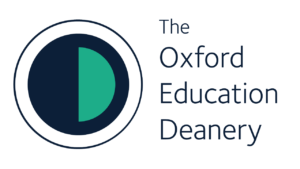People who do research are not usually the people who use research. Therefore, if research is to be meaningful, relevant and useful to research users (in this case, teachers and other educators), it is important that those people are given a voice in telling researchers what questions they should try to answer. When researchers know what research users want from research, they can ensure that their research is meaningful (it addresses questions about which there is demonstrated interest), it is relevant (it addresses uncertainties that have emerged from the practical experiences of research users), and is useful (it informs practice). For this project, we set up a priority setting partnership (PSP) with research users in the field of English as an Additional Language (EAL). The aim of the PSP was (i) to find out which uncertainties are most common among EAL research users, (ii) to refine those uncertainties into questions amenable to investigation through research, then (iii) to prioritise those questions in a Top 10 list, to be publicised to EAL researchers and research funders.
Deanery Digests are short, plain language summaries of the Department of Education’s research outputs. This Deanery Digest is based on the following published research article: Chalmers, H., Faitaki, F., & Murphy, V. (in press). Setting Research Priorities for English as an Additional Language: What do research users want from EAL research? Language Teaching for Young Learners, 0(0), 00000000.
What is this research about and why is it important?
What did we do?
It was important to have EAL research users involved right from the start of this project. Therefore, we established a steering committee consisting of a secondary EAL teacher, a Primary EAL teacher, a manager of an Ethnic Minority Achievement Service, and a parent of EAL children. The steering committee oversaw all decisions made by the project team and helped to publicise the PSP. Under their direction, we created an online uncertainty questionnaire, which asked EAL research users to state what ‘unanswered questions’ they had about their practice. We sorted these unanswered questions into main categories based on the general focus of each question. Then we looked at the specific focus of the questions in each category and collapsed similar questions into one ‘research question’ to reflect each area of focus. We then created an online ranking survey and asked EAL research users to rank these in order of priority. Finally, we convened an online workshop with representatives of the EAL research user community to debate and discuss the top 25 ranked questions, and agree on a top 10 list of priorities. We then sent this top 10 list to research funders and researchers in the field of EAL in the hope that it will help inform their plans for new EAL research.
What did we find?
Two-hundred and twenty-five research users contributed to the uncertainty survey, producing a total of 767 individual ‘unanswered questions’. When we collapsed similar questions, we ended up with 81 unique research questions. Eighty-three EAL research users ranked these in order of priority in the ranking survey. The online workshop further refined this list to produce the final top 10. These were:
- What is the impact of inclusion teaching vs pull out teaching for EAL learners’ English language development? Does this vary with age, time spent learning English, and/or stage of English language development? If so, in what ways?
- What are effective strategies for subject teachers to use to combine English language teaching and curriculum content teaching?
- In the context of mainstream British-model education systems, what approaches to supporting new to English pupils are most effective? In particular, what are effective approaches to maximising the potential of late entry new to English pupils’, and how can intellectual challenge be maintained for all new to English pupils?
- What are effective strategies for building on social language proficiency to develop and maintain proficiency in subject- or genre-specific academic language proficiency?
- What are effective/reliable ways to identify Special Educational Needs and Disability in EAL learners that differ from normal and expected language learning needs?
- What are effective ways to adapt instruction and assessment for EAL learners with different Special Educational Needs and Disabilities?
- What are the effects of explicit (formalised) instruction vs implicit (immersive) exposure to English on the learners’ proficiency and progress?
- How can EAL learners, including those without the English necessary to articulate pastoral needs or emotional wellbeing, be best supported in their socioemotional development?
- What are the characteristics of their educational experiences that EAL learners consider most beneficial for their learning of English language and curriculum content?
- What are the characteristics of successful whole school policies for supporting EAL leaners? This includes, but is not limited to, sub-questions such as: In schools that are successful in supporting EAL learners in the mainstream, who takes responsibility, how is cross disciplinary consistency maintained, how are resources allocated, how is information about EAL learners communicated to staff, and so on?
What does it all mean anyway?
For the first time as far as we are aware, people who work and live directly with EAL learners have collaboratively and democratically articulated what they feel are the most important questions for researchers to address relevant to improving the education of EAL learners. Researchers and research funders now have evidence about what sort of research they should fund and conduct, assuming their aim is to make their research relevant, meaningful and useful to the people whose practice it is intended to inform. We encourage researchers to take this Top 10 into account when deciding what research to do next, and we encourage funders to prioritise projects that address the questions in this list.
The project website describes in more detail what we did, and includes examples of the materials we used. Visit it here: EALpsp.wordpress.com.

